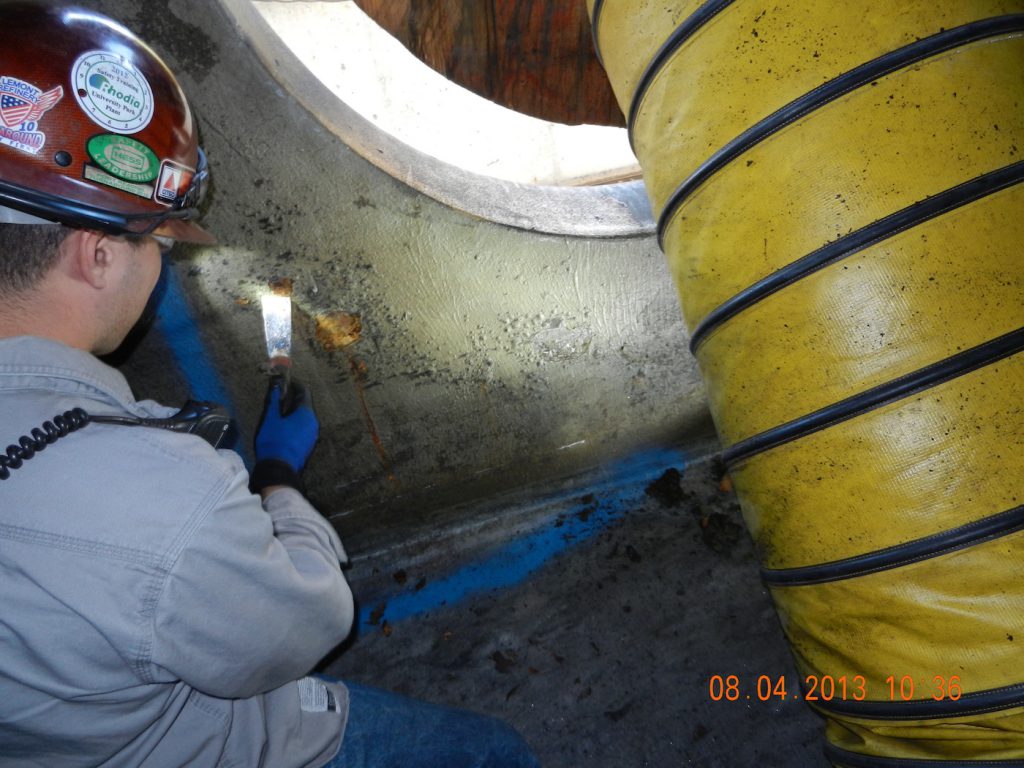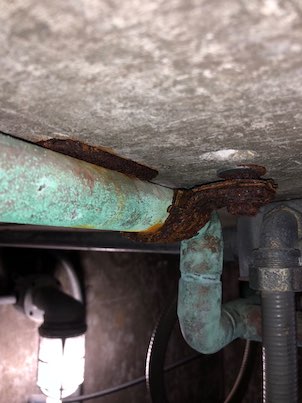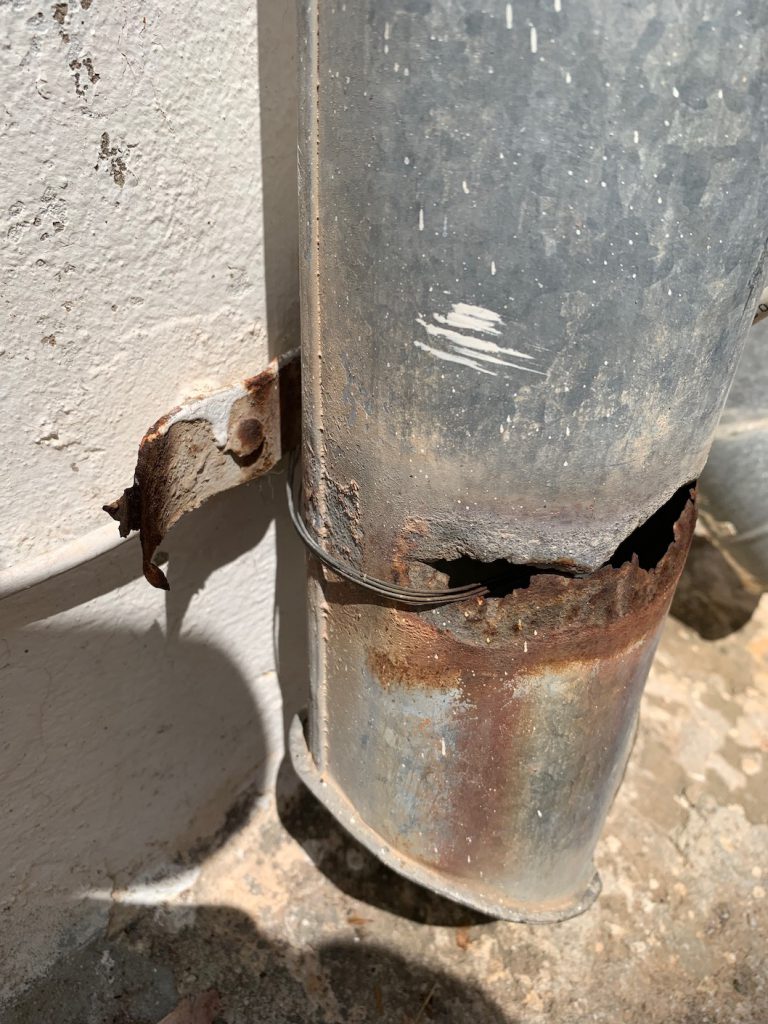20 Aug Galvanic corrosion exposed on the streets of Dubrovnik
So, I was walking back from a secluded beach in Dubrovnik (don’t worry, I’ll spare you the photo of me in a bathing suit), with my wife and three daughters (24, 22 and 19) this summer when I yelled excitedly, “Hey, check this out…”
They all stopped mid-stride and turned around enthusiastically hoping that I had identified an inviting coffee shop, ice-cream parlor or vista. But as has happened so many times in the past, their hopes were dashed when they spied me pointing to the bottom of a downspout and squatting to take photos.
I yelled, “Look! Galvanic corrosion!”
They collectively hung their heads and walked on, a mix of disappointing and embarrassment evenly meted out.
The scene has repeated itself a thousand times while on vacation or walking around as a family.
I’m a corrosion nerd – there’s no denying it. And on this sweltering day in Dubrovnik I stumbled upon one of the coolest examples of galvanic corrosion I had ever seen. Apparently, someone (clearly not a corrosion nerd) had used carbon steel wire to hold cable adjacent to the wall. Over time (I would guess in under a year) the wire simply ate through the aluminum downspout, the corrosion being exacerbated, no doubt, by the proximity to the salty Adriatic.
For those of us in the corrosion mitigation field, understanding and devising creative solutions in which to thwart corrosion is a full-time job. And more often than not, corrosion is straightforward in terms of identifying optimal solutions (CCG’s core business).
But let’s take a brief, but deep dive into galvanic corrosion, which occurs when dissimilar metals are in electrical (intimate) contact and exposed to an electrolyte.
Dissimilar metals simply means metals that are different from one another. You can Google “chart of Nobel metals” which ranks metals on their ability to resist corrosion and oxidization. Ever wonder why gold has been all the rage for thousands of years? Well, it doesn’t corrode and looks pretty. In fact, I was at an art show with my wife the other day, and I nearly broke my neck when I heard a jeweler boasting about her “oxidized gold jewelry.” I turned around to see some of this magic gold oxide and ask some questions. “Well, it’s not technically oxidized,” she explained. “It’s more painted.”
On the top of the list is platinum followed by gold. And at the bottom are zinc and magnesium (materials commonly used for sacrificial anodes – topic of another blog). But any time you mix and match metals, the one lower on the chart will corrode faster than the one above it. Further, it will corrode even faster than if it were alone. For example, if you have a carbon steel tank in service (doesn’t matter what service) it will have some sort of corrosion rate. But weld in a stainless steel manhole, and the corrosion rate within a few feet of the shiny new attachment will skyrocket.
One of the most public examples of galvanic corrosion was an issue which occurred at the big dig in Boston. Apparently stainless-steel clips were attached to aluminum housings. Aluminum is lower on the list of Nobel metals, so the aluminum was corroding faster where attached to the stainless steel clips (technically, the aluminum had become anodic to the stainless steel).
Several of the large light fixtures had fallen, and only $54 million later, things were right as rain.
I’ve seen examples of galvanic corrosion hundreds of times – most notably, and surprisingly, in very large above ground storage tanks, where someone has installed a stainless steel manway into the carbon steel shell of a tank. I’ve also seen stainless steel supports welded into the bottom of carbon steel tanks, stainless steel pipe hangers hung on carbon steel pipes, and on, and on, and on.
Galvanic corrosion remains one of the easiest of corrosion challenges to manage. Don’t weld or otherwise attach dissimilar metals to one another. How it continues to happen, particularly in sophisticated settings, remains a mystery to me.
However, if the cat is out of the proverbial bag and the deed is done, there are only two options.
- Remove the electrolyte. As we all know, corrosion requires at least four things to take place: An anode, cathode, metallic pathway and electrolyte. Take away any one of these, and corrosion will stop. In the world of corrosion mitigation, the most common method of removing the electrolyte is by paining.
- If the two metals are not welded to one another, like, let’s say, bolted or as a hanger, then put a dielectric washer or other fitting so they two metals are not touching.
Corrosion is not new. In fact, roughly 2.5 billion years ago, there was an event scientists refer to as the “Great Oxidation Event,” where cyanobacteria started producing oxygen on a planet where earlier there had been none. The general consensus is that without this explosion in the production of oxygen, and corresponding increase in oxidation (corrosion) life on earth may never have formed.
Speaking for oxygen and oxidation to all of you reading this blog, you’re welcome!







Sorry, the comment form is closed at this time.